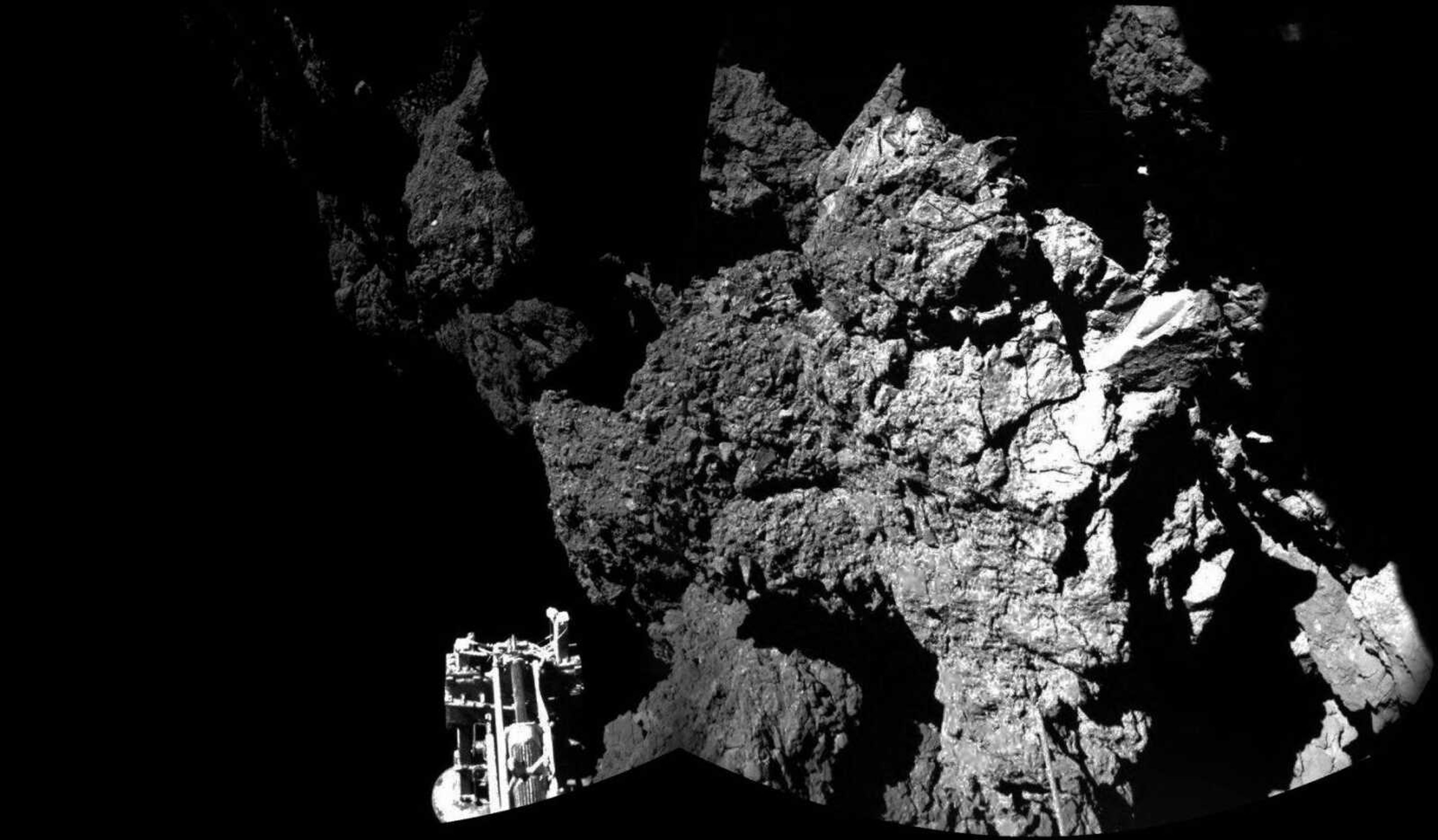BERLIN -- A shadow was cast -- literally -- across Europe's historic mission to land on and explore a comet. Scientists said Thursday the landing craft not only bounced twice, it also came to rest next to a cliff that's blocking sunlight from its solar panels.
The good news is the lander Philae is stable and in good health: Its scientific instruments have begun gathering reams of data to send back to Earth, including the first pictures taken from the surface of a comet.
The bad news is its useful lifetime may be much shorter.
With just a day or two left before the lander's primary battery is exhausted, scientists were considering what acrobatic maneuvers to risk to get the solar panels out of the shadows so they can keep Philae going for a few more months.
The first photos sent back to Earth revealed the comet's rocky terrain, including an image that showed one of the lander's three feet in the corner of the frame. They indicate Philae's instruments are working properly, said Jean-Pierre Bibring, the lander's lead scientist at the European Space Agency.
Before deciding whether to try to adjust the lander, scientists will spend the next day or two collecting as much data as possible while its primary battery has energy. The lander's solar panels were designed to provide an extra hour of battery life each day after that, but it may not be possible now.
"We see that we get less solar power than we planned for," said Koen Geurts of the lander team.
"This, of course, has an impact on our ... capabilities to conduct science for an extended period of time," he said. "Unfortunately this is not a situation that we were hoping for."
The lander scored a cosmic first Wednesday, touching down on comet 67P/Churyumov-Gerasimenko after a decadelong, 4 billion-mile journey through space aboard its mother ship, Rosetta. The comet is streaking through space at 41,000 mph about 311 million miles from Earth.
The landing was beset by a series of problems that began when thrusters meant to push Philae onto the comet failed. Then two harpoons, which should have anchored the lander to the surface, didn't deploy.
This caused the lander to bounce off the comet and drift through the void for two hours before touching down again. After a second smaller bounce, scientists believe it came to rest in a shallow crater on the comet's 2 1/2 mile-wide body, or nucleus.
"We are just in the shadow of a cliff," Bibring said, adding that photos indicate the cliff could be just a few yards away. "We are in a shadow permanently, and that is part of the problem."
Bibring and his colleagues stressed the data they'll be able to collect with the primary batteries alone will have made the landing worthwhile.
"A lot of science is getting covered now," he said, noting scientists will get their hands on a tomography of the comet and data showing whether the matter it is made of is magnetized.
But because the lander is just resting on the comet with nothing but low gravity holding it down, Philae will have to hold off on one of the most important experiments -- drilling into the comet to extract some of the material buried beneath the surface.
Scientists want to analyze this material because it has remained almost unchanged for 4.5 billion years.
"Drilling without being anchored and without knowing how you are on the surface is dangerous. We might just tip over the lander," said Stephan Ulamec, head of operations for Philae. Gravity on the comet is 1/100,000th that of Earth, meaning the washing machine-sized lander weighs just 0.04 ounces (1 gram) there.
Ground controllers will likely wait until the first big batch of data has been collected before attempting to adjust the lander so that its solar panels can catch the sun and charge its batteries.
Communication with the lander is slow, with signals taking more than 28 minutes to travel between Earth and the Rosetta orbiter flying above the comet.
Even if Philae uses up all its energy, it will remain on the comet in a mode of hibernation for the coming months. The comet is on a 61/2-year elliptical orbit around the sun, and at the moment it is getting closer. So, in theory, Philae could wake up again if the comet passes the sun in such a way that the solar panels catch more light, Ulamec said.
Meanwhile, the Rosetta orbiter will also use its 11 instruments to analyze the comet over the coming months. Scientists hope the $1.6 billion (1.3 billion euro) project will help them better understand comets and other celestial objects, as well as possibly answer questions about the origins of life on Earth.
Connect with the Southeast Missourian Newsroom:
For corrections to this story or other insights for the editor, click here. To submit a letter to the editor, click here. To learn about the Southeast Missourian’s AI Policy, click here.







